Symmetry in living room design creates a sense of balance, harmony, and visual comfort by mirroring elements around a central axis. Whether through matching furniture pieces, paired accessories, or balanced layouts, symmetrical arrangements draw the eye into the space and foster a cohesive atmosphere. From classic traditional spaces that lean into formal mirror-image styling, to contemporary rooms that use symmetry more subtly—such as balanced color blocking or identical lighting fixtures—symmetry adapts to diverse styles and room configurations. In the following 20 ideas, each section explores a distinct approach to achieve a symmetrical living room, providing inspiration for layouts, furnishings, and décor that invite both order and elegance into your home.
1. Matching Sofas
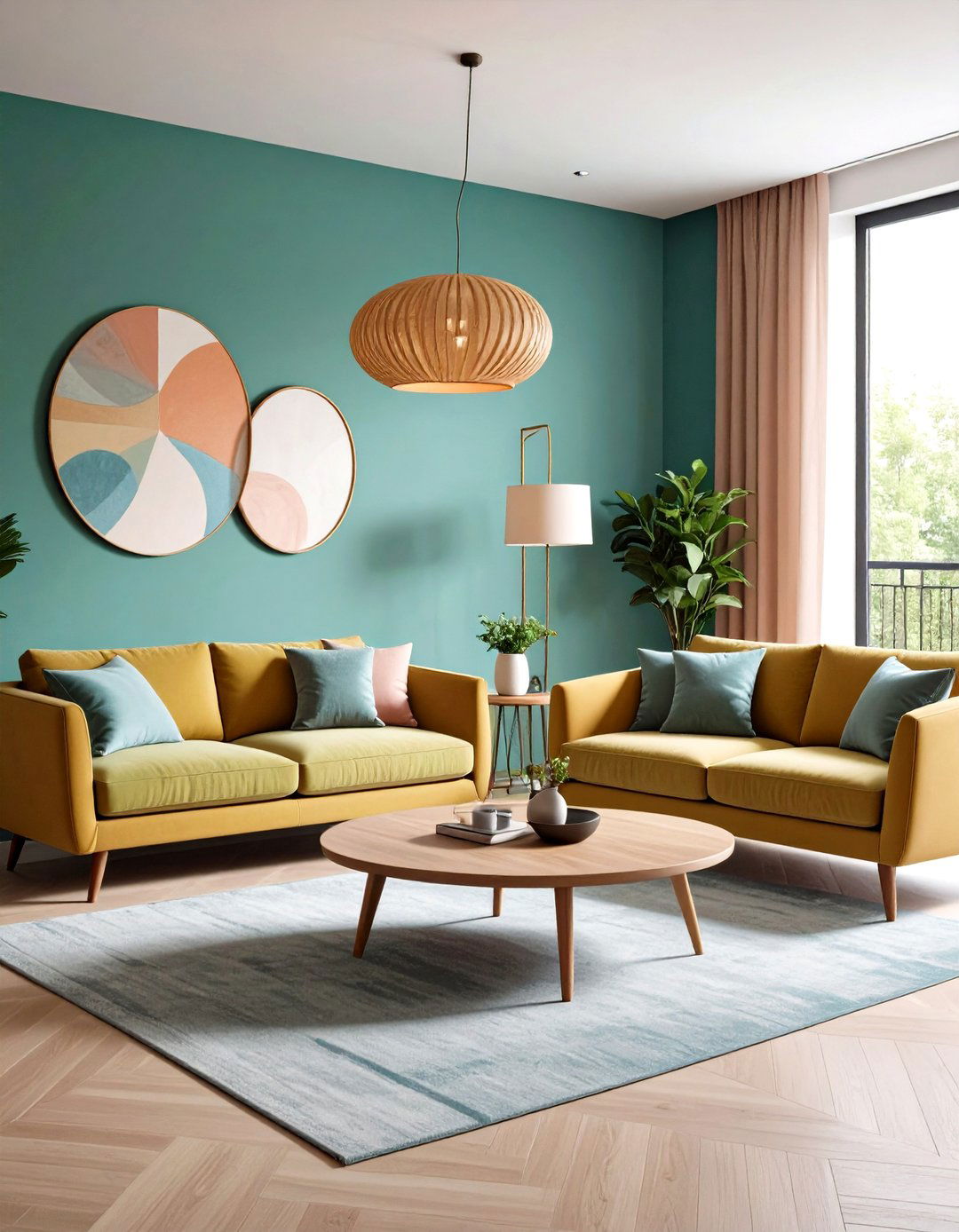
Placing two identical sofas facing each other across a central focal point—such as a coffee table or fireplace—establishes instant symmetry and encourages conversation by creating a defined seating area. This mirrored layout feels inviting and balanced, ideal for entertaining or relaxed family gatherings. To elevate the look, choose sofas with similar upholstery, leg style, and cushion detailing, then anchor them with a centrally located rug that ties both pieces together. This arrangement also allows for symmetrical placement of side tables and floor lamps at each sofa’s outer edge, reinforcing visual equilibrium and ensuring no corner of the room feels neglected.
2. Flanking Chairs

Pairing two armchairs on either side of a sofa or fireplace frames the central element and offers additional seating without disrupting balance. Opt for chairs with the same silhouette, upholstery fabric, and scale to maintain a cohesive appearance. Position them at equal distances from the focal point—ideally at a slight angle—to warm up the space and create an intimate conversation nook. Complement these chairs with identical throw pillows or a small matching ottoman between them, further enhancing the symmetrical grouping while adding texture and comfort to the overall design.
3. Identical Side Tables
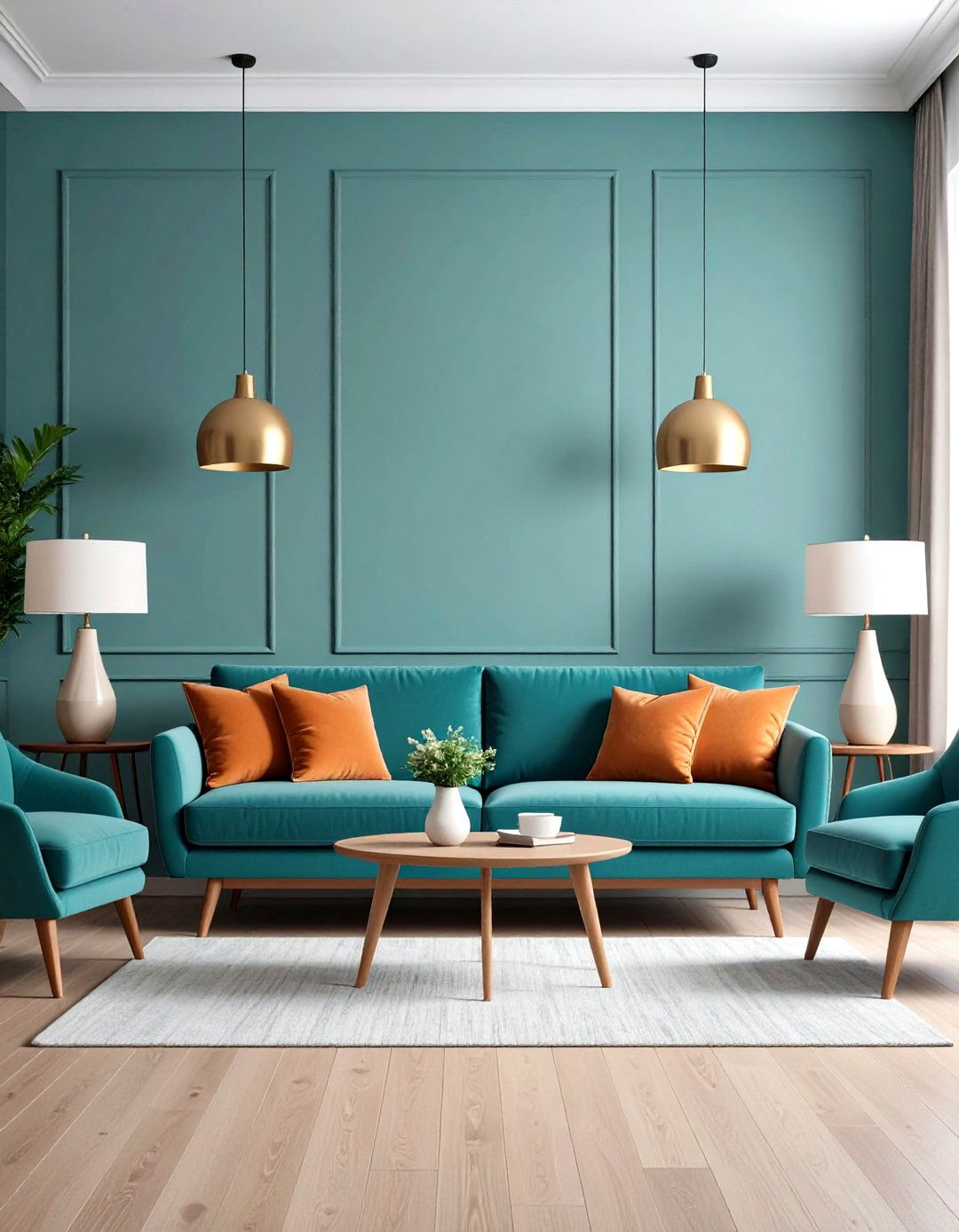
Using matching side tables beside sofas or chairs provides both form and function, reinforcing the room’s symmetry while offering surface area for lamps, drinks, or décor. Select tables of the same material—whether wood, metal, or glass—and with similar height, shape, and detailing. These parallel tables can support identical table lamps or décor vignettes (such as a stack of books topped with a small plant) to mirror each other precisely. The repetition of shape and scale helps the eye travel seamlessly around the room, promoting a calm and orderly aesthetic.
4. Central Focal Point

Establishing a clear central focal point—like a fireplace, media console, or large piece of art—and arranging furniture in mirror-image fashion around it is the essence of symmetrical design. Center your primary seating piece directly across from the focal point, then flank it with matching chairs or tables on both sides. This approach draws attention to the heart of the room while ensuring that each side of the space feels equally weighted. To reinforce the symmetry, balance accessories—such as candlesticks, vases, or framed photos—on the mantel or console in matching pairs.
5. Paired Floor Lamps
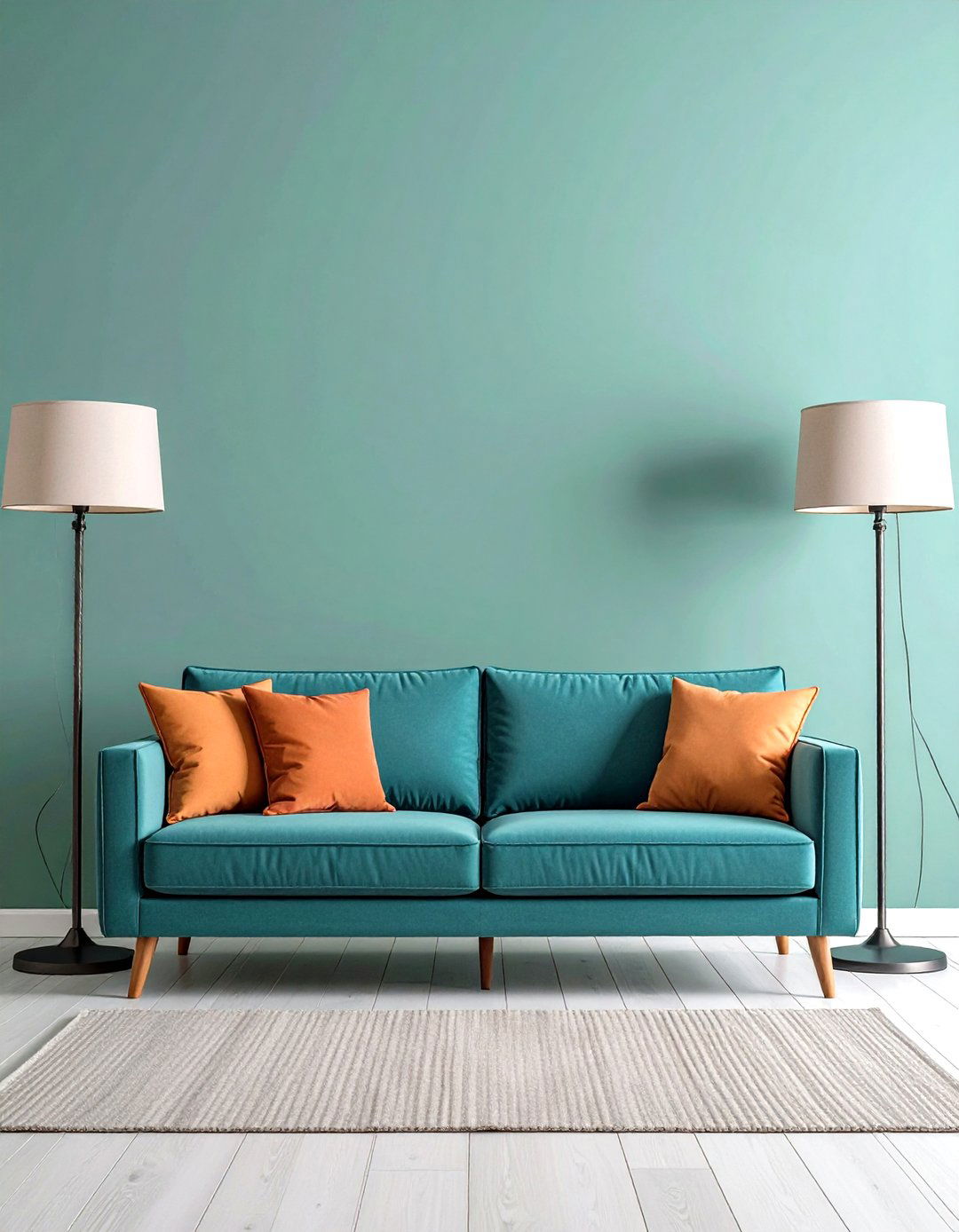
Installing two identical floor lamps on opposite sides of a sofa or console table introduces symmetry through lighting and scale. Choose lamps with the same height, finish, and shade style to ensure they read as a pair. Their glow will evenly illuminate the seating area, creating a warm, cohesive ambiance at night while maintaining visual balance during the day. Position them at equal distances from the center of your focal point, and consider adding matching dimmer switches to synchronize brightness levels for both lamps.
6. Mirrored Décor
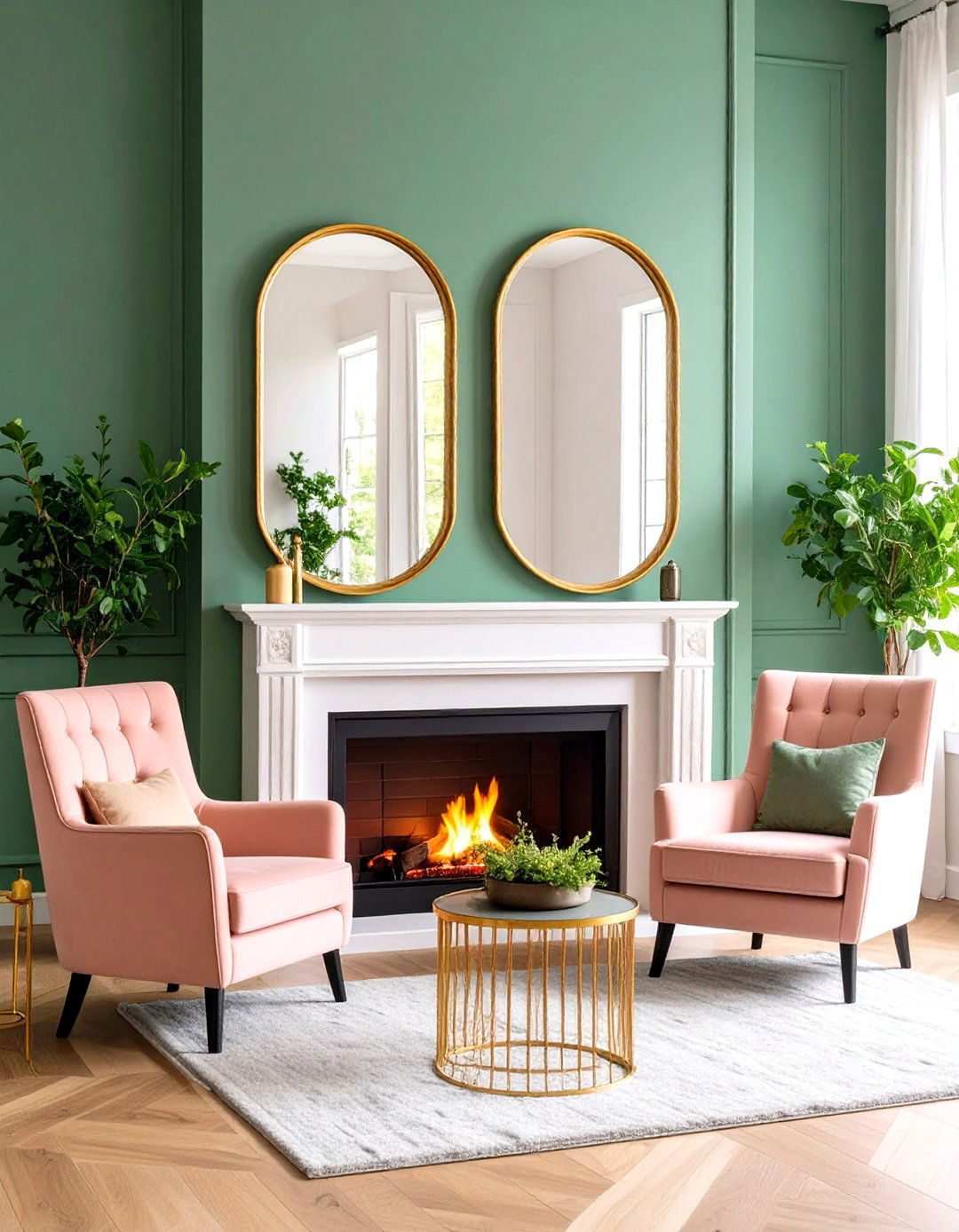
Using identical mirrors on either side of a fireplace, sofa, or large window amplifies natural light and visually expands the space. Choose mirrors with matching frames—whether ornate gilt, minimalist metal, or wooden—hung at the same height and distance from the center. This reflective symmetry not only brightens darker rooms but also creates the illusion of additional depth. Mirrors can also reflect other paired elements in the room, such as side tables or greenery, reinforcing the balanced design scheme.
7. Symmetrical Gallery Wall

Arranging framed artwork or photographs in a perfectly balanced grid on one wall provides a dynamic focal point while maintaining order. Use identical frames and matting, spacing each piece evenly in rows and columns. Center the gallery directly above a sofa or console table, ensuring equal margins on both sides. This method works especially well with family photos, abstract prints, or botanical illustrations, and can be scaled up or down to suit the wall size. The result is a curated display that feels deliberate and harmonious.
8. Central Rug Alignment
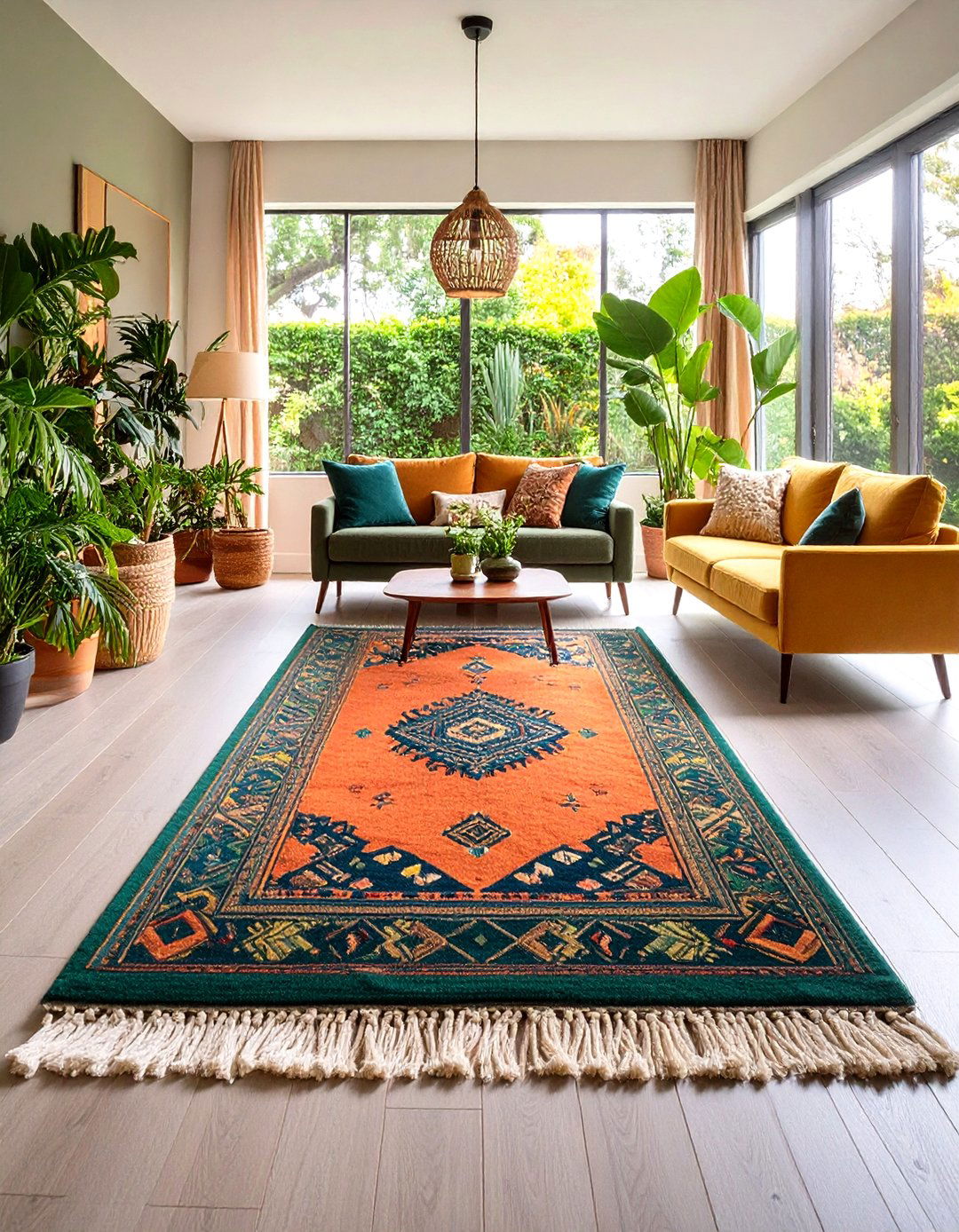
Positioning an area rug centrally in the room with identical amounts of floor exposed on all sides creates a balanced foundation for your furniture. Align the rug under the coffee table or main seating arrangement so that each piece sits equidistant from the edges. This technique helps define the seating zone while visually anchoring all surrounding furnishings. A rug with a symmetrical pattern—such as stripes, geometric motifs, or central medallions—further reinforces the overall sense of balance.
9. Twin Ottomans
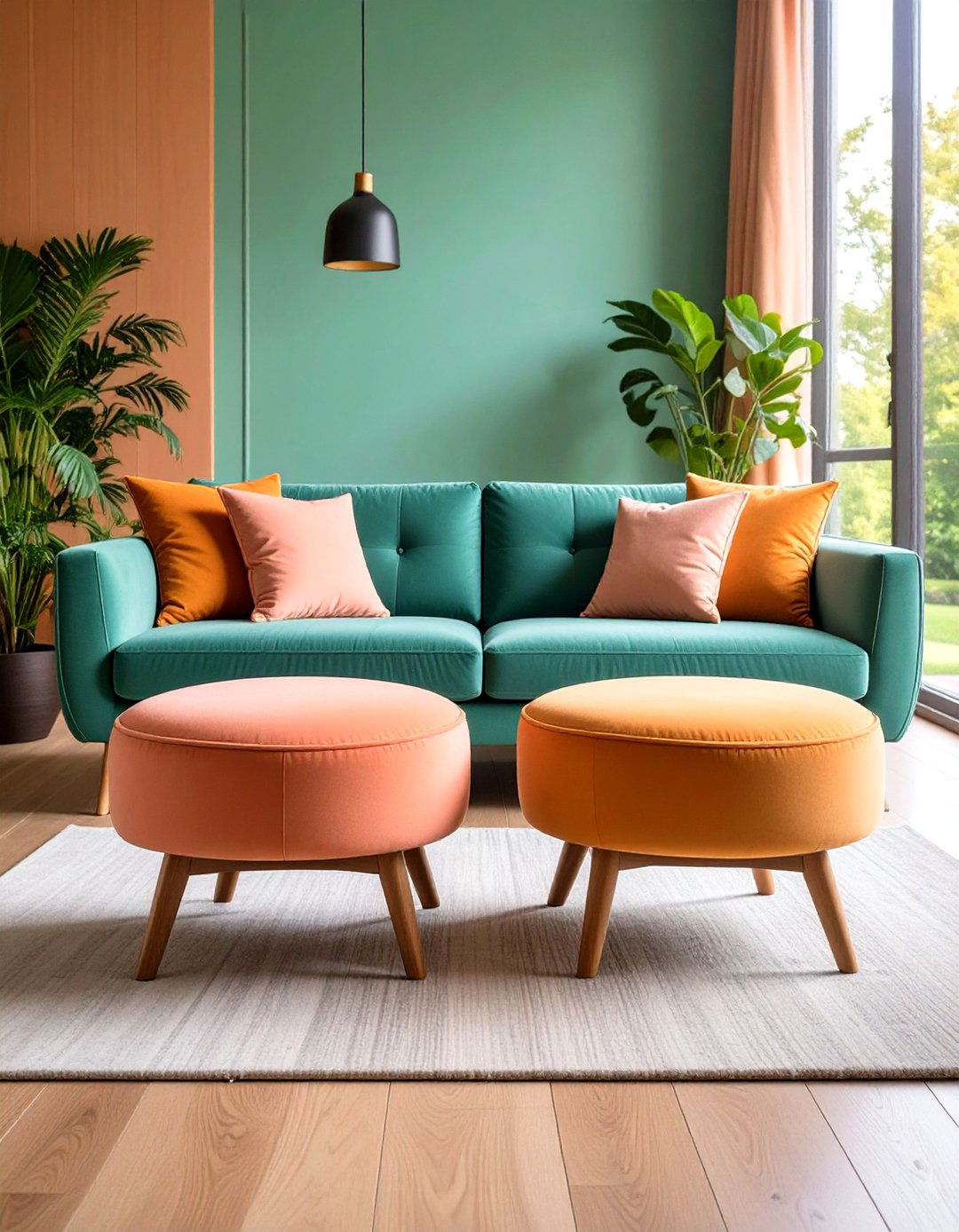
Placing two matching ottomans in front of a sofa or beneath a console table offers a versatile, symmetrical layout that can double as additional seating or footrests. Choose ottomans with identical upholstery, tufting, or shape, and space them evenly apart. You can switch them out for matching poufs or low stools for a more casual look without sacrificing symmetry. Their low height ensures they complement rather than compete with taller furniture while providing functional flexibility.
10. Paired Plants

Flanking a doorway, window seat, or console with two identical potted plants introduces natural symmetry and a touch of greenery. Select planters of the same style—ceramic, woven basket, or sleek metal—and fill them with matching or complementary plant species. The equal visual weight of the pots and the mirrored placement of foliage adds life and freshness to the room, while reinforcing the balanced layout. This strategy works especially well in minimalist spaces where greenery becomes a focal design element.
11. Matching Draperies
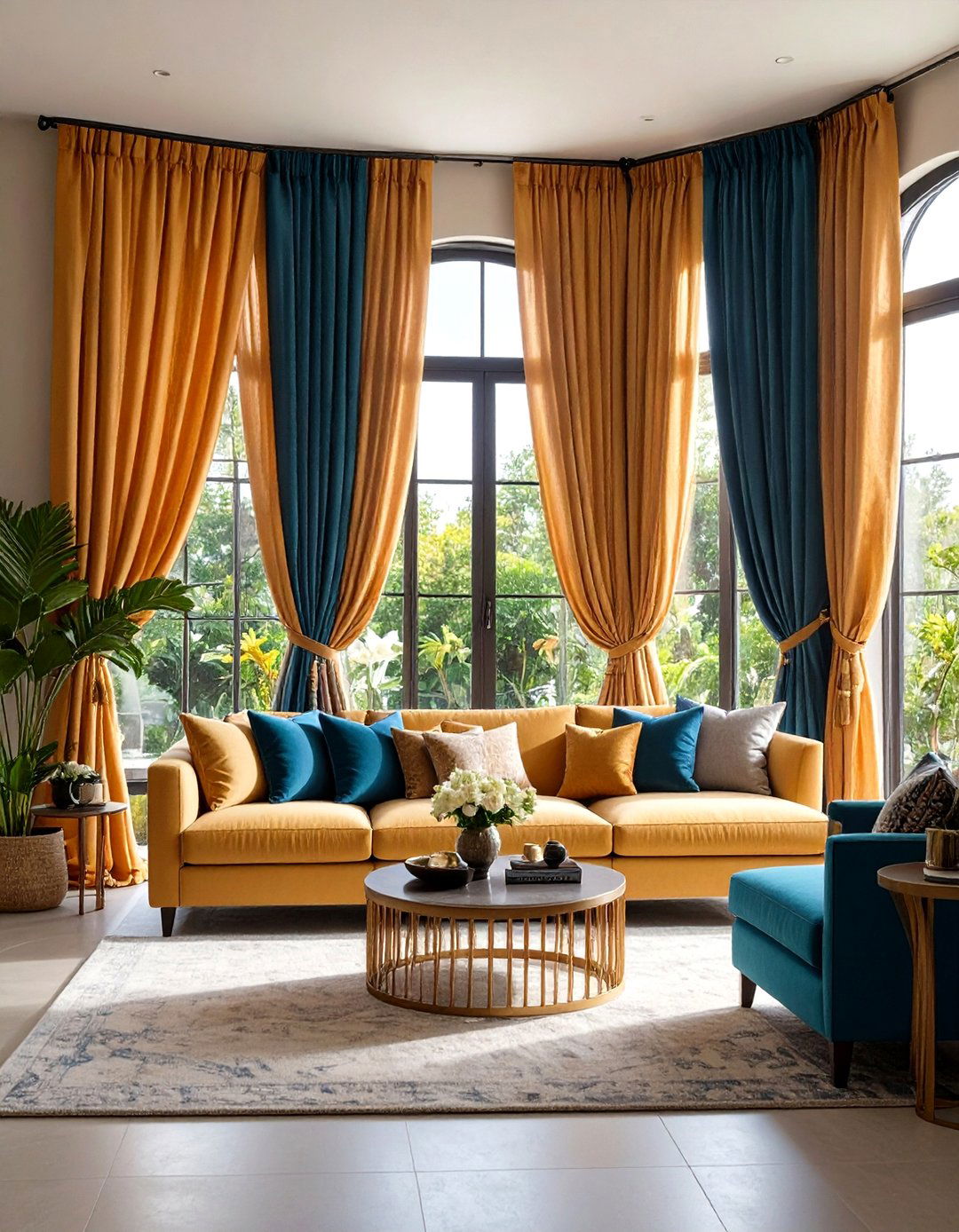
Hanging identical drapes on either side of a window or sliding door ensures that the window treatment contributes to the room’s symmetry. Opt for panels in the same fabric, length, and pattern, and mount the rod so both panels open and close evenly. Floor-length drapes that hover just above the ground add elegance, while visually lengthening the walls. When drawn open, they frame the window like a pair of curtains on a stage, highlighting the view outside and maintaining perfect balance.
12. Symmetrical Shelving Units
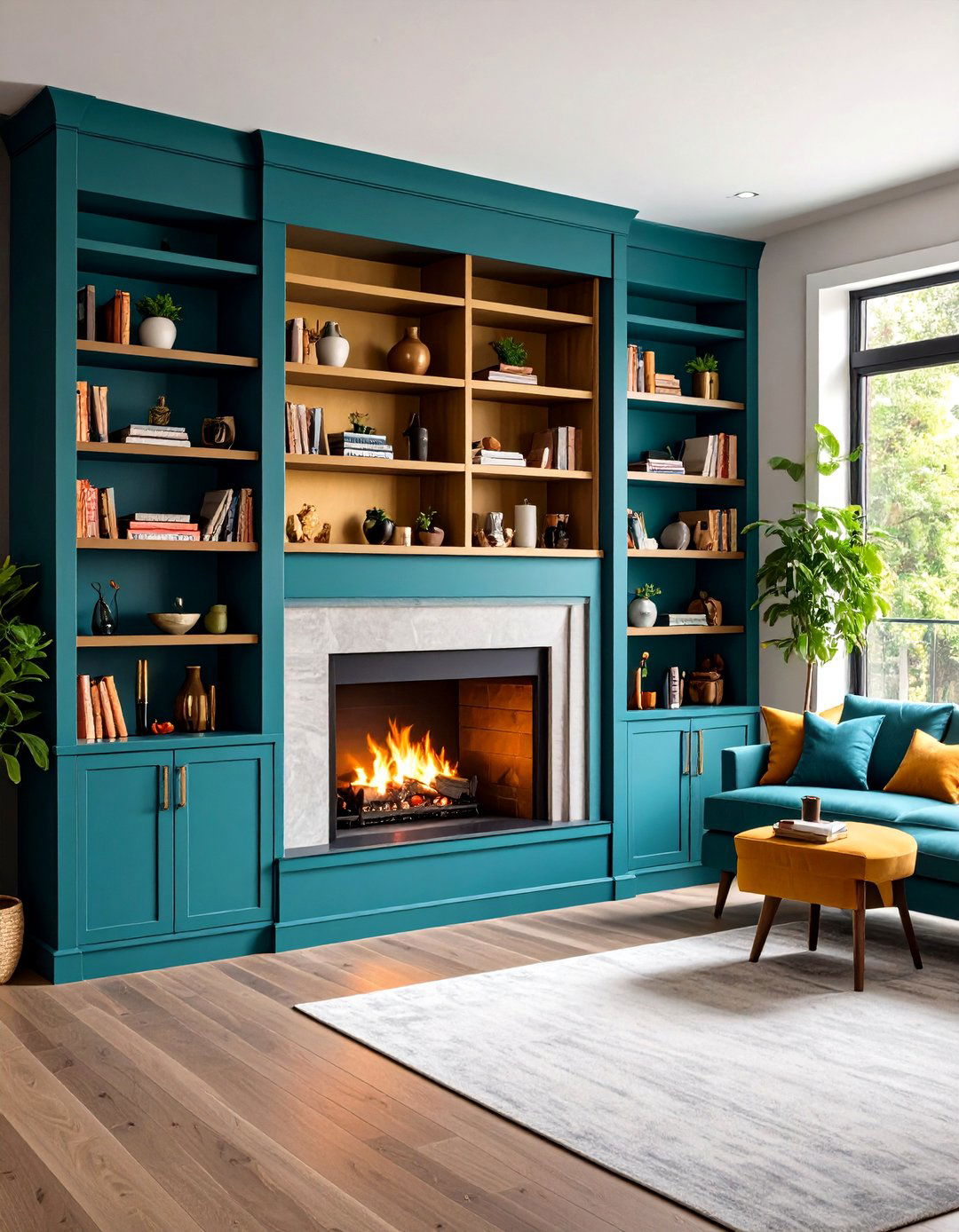
Installing two identical bookcases or shelving units on either side of a fireplace or media center creates storage and display space while reinforcing symmetry. Style each shelf with matching groupings—such as books, vases, and sculptures—so that both units mirror each other in composition and color palette. Alternating horizontal and vertical books, along with uniform décor objects, ensures that neither side appears heavier than the other, and the repetition of shapes and forms guides the eye smoothly across the room.
13. Balanced Color Blocking
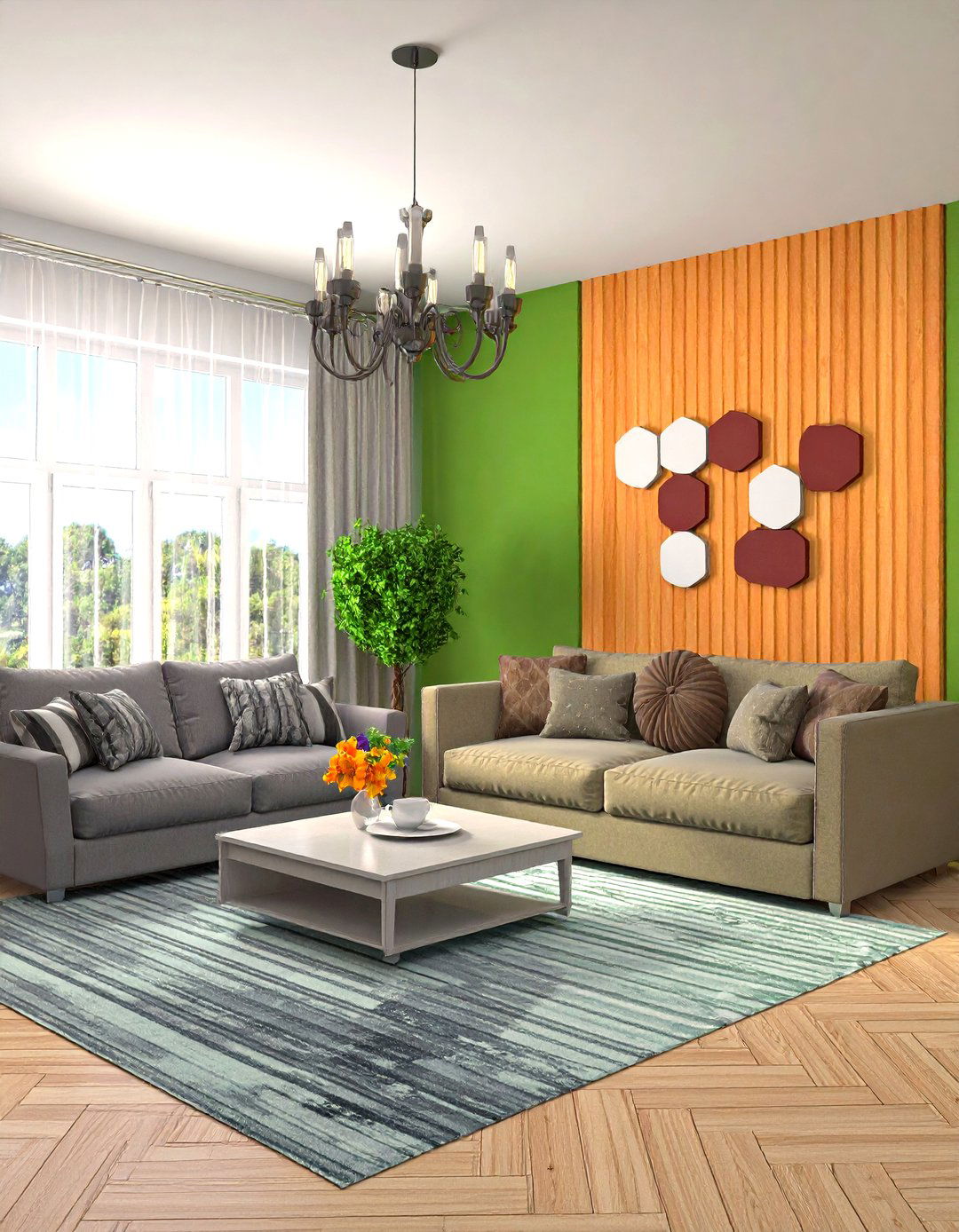
Applying two dominant colors in equal measure—such as painting half the wall and furnishing half the space in one hue, and the other half in a complementary tone—creates a modern, symmetrical effect. For example, a living room might feature one wall in deep navy balanced by a sofa and rug in lighter blue tones on the opposite side. Maintaining symmetry through color alone can be especially impactful in open-plan homes, delineating the living area while conveying a deliberate, cohesive design.
14. Identical Throw Pillows
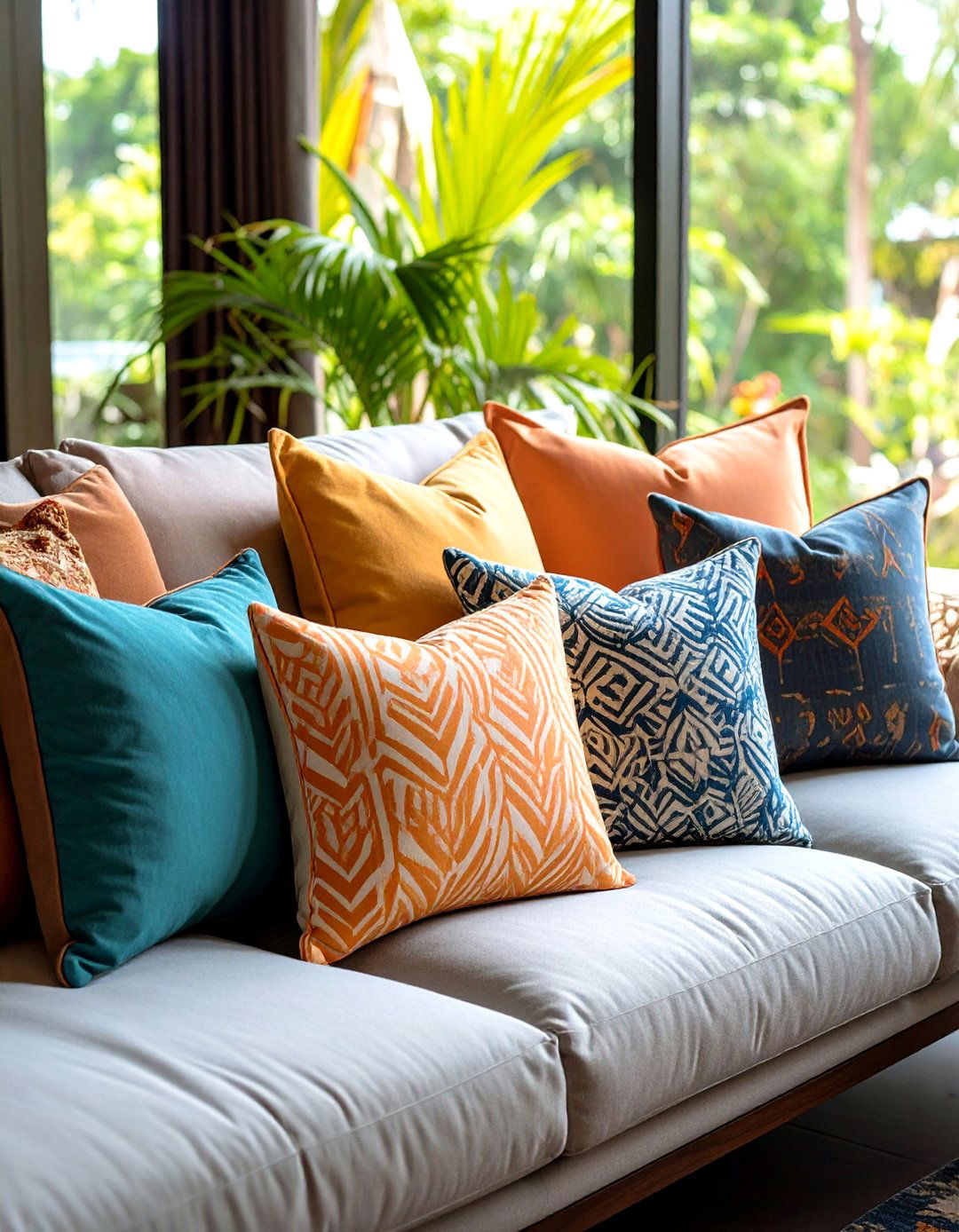
Lining a sofa or bench with matching throw pillows on each end introduces a subtle yet effective symmetrical detail. Choose pillows of the same size, shape, and pattern, and place them equidistant from the center of the seating. For a richer look, layer a larger square pillow in the back with a smaller lumbar pillow in front, repeating the same combination on both sides. This small touch elevates the overall styling and ties together other paired elements in the room.
15. Twin Accent Tables
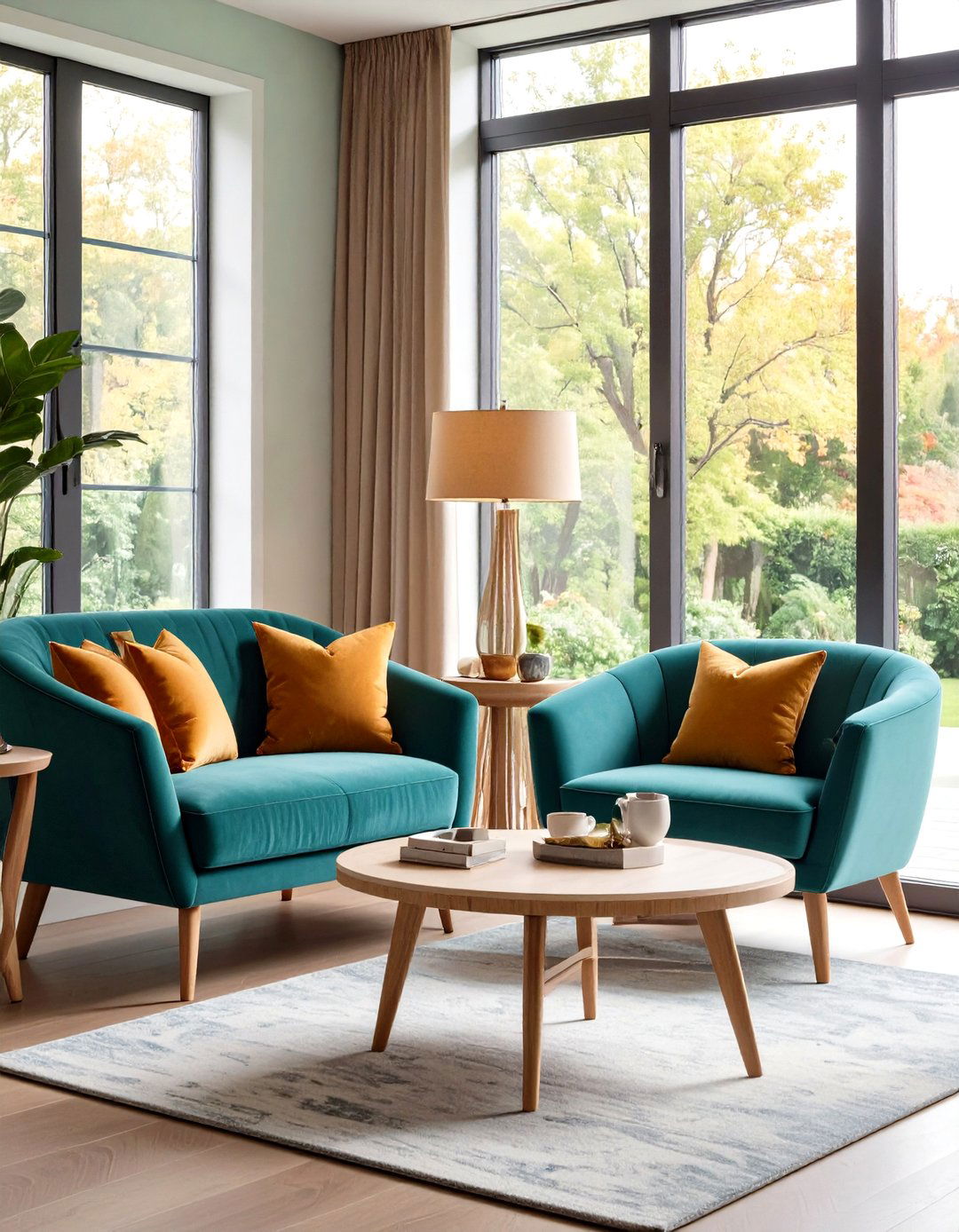
Using small, identical accent tables on each side of a console, bed (in adjacent sitting areas), or window seat adds symmetry at a smaller scale. Whether round, square, or sculptural in shape, make sure both tables match exactly in material and height. These versatile surfaces can hold books, drinks, or decorative objects, and their repeated presence throughout the room reinforces a sense of cohesion and visual rhythm.
16. Centered Console Table
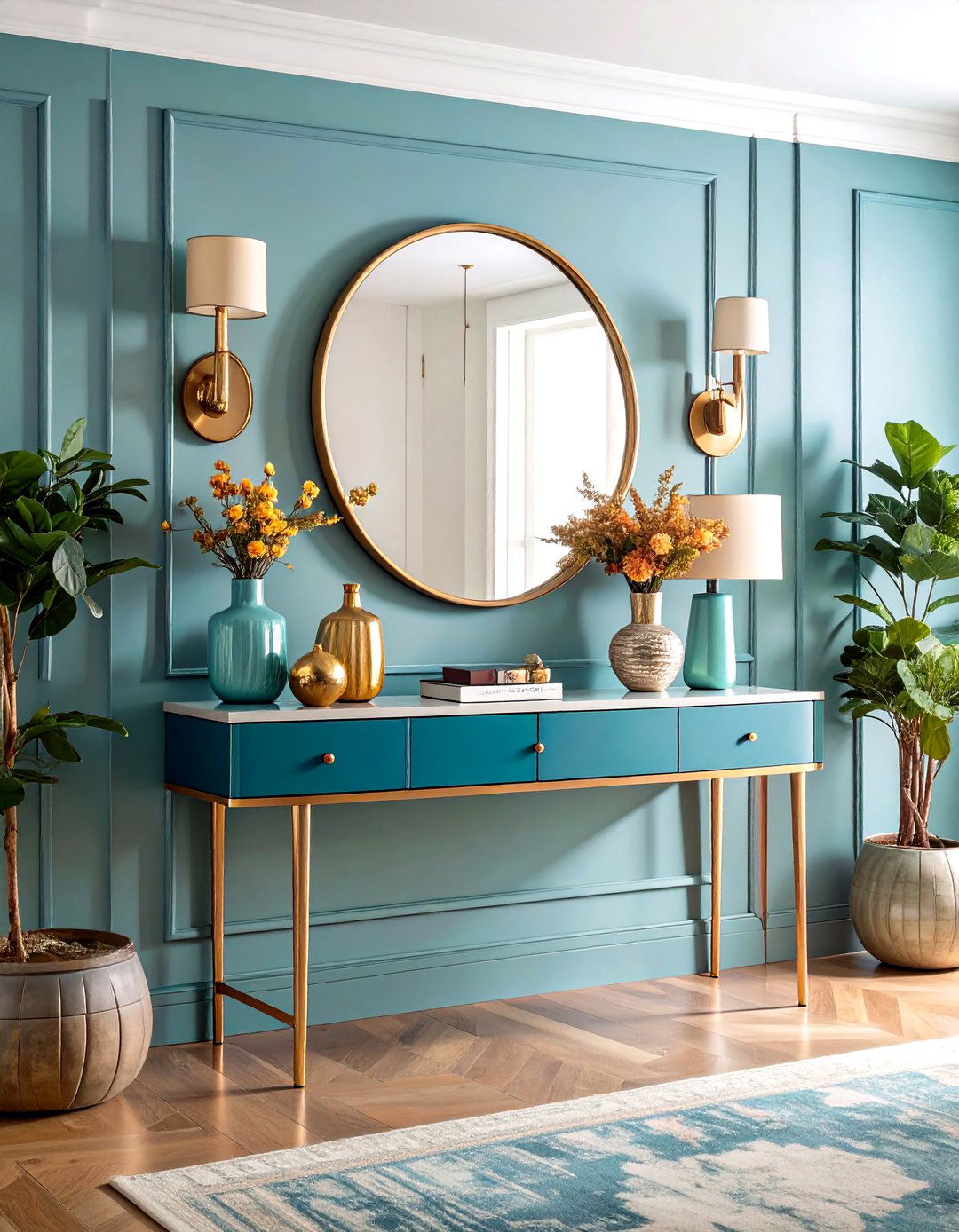
Placing a slim console table directly under a centrally hung mirror or piece of art and flanking it with matching lamps or accessories draws the eye to the midpoint of the wall. This arrangement works well in narrow living rooms or behind a sofa. Ensure the table is proportional to the wall space, and choose décor items—such as vases, sculptural objects, or photo frames—in pairs to mirror each other on either end.
17. Symmetrical Fireplace Mantel
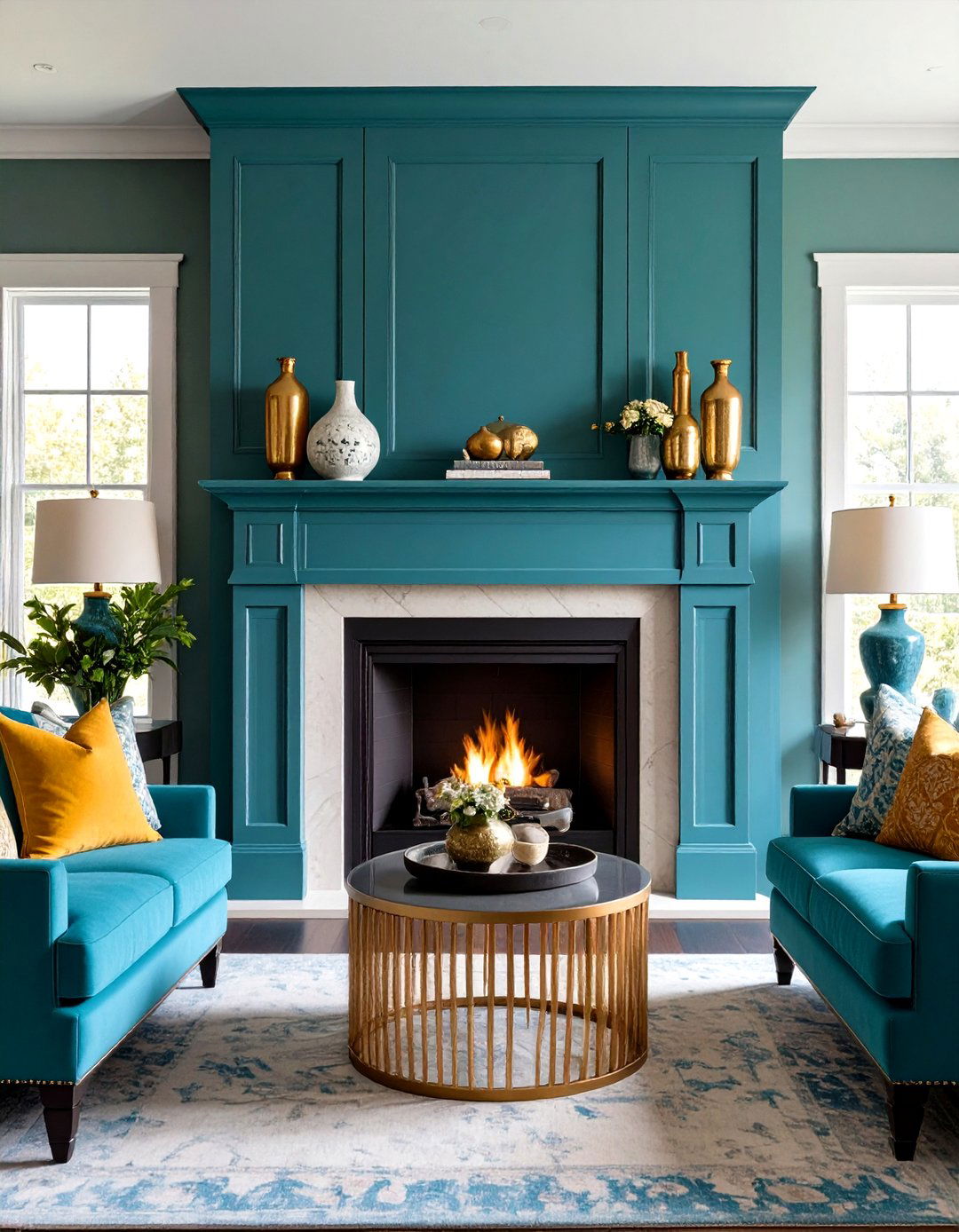
Styling a fireplace mantel with mirrored candlesticks, identical framed prints, or matching decorative objects on each side reinforces the centrality of the hearth. Anchor the arrangement with a single large mirror or artwork above, then balance each mantel corner with pairs of items that echo in shape and scale. This harmonious display transforms the fireplace into the room’s focal point while maintaining perfect equilibrium.
18. Mirrored Furniture
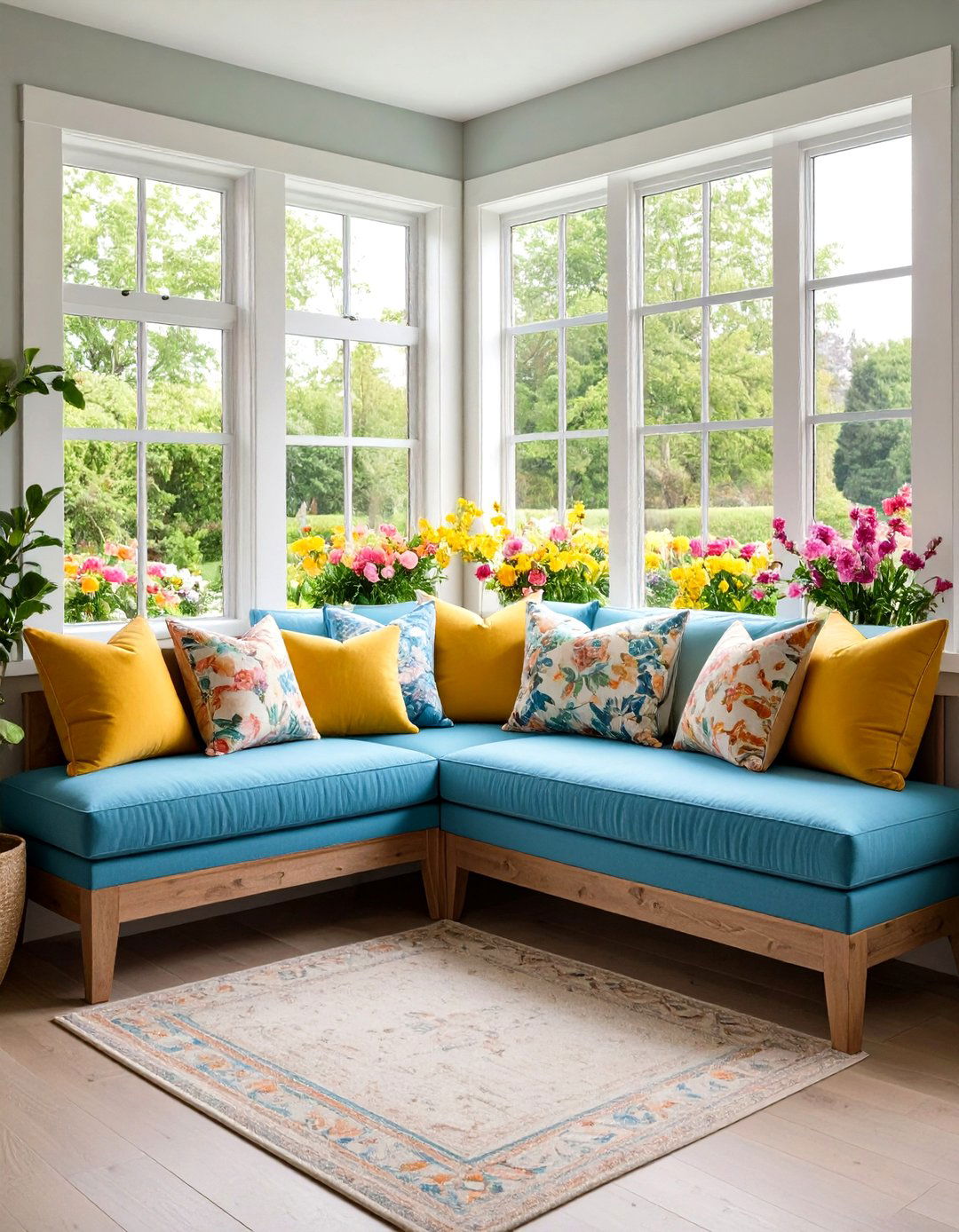
Incorporating mirrored coffee tables or side tables—used in matching pairs—adds both symmetry and reflective luminosity. These pieces visually lighten the room by bouncing light around, and when placed opposite each other, they create a polished, upscale ambiance. Pair them with soft textiles and metallic accents to balance the reflective surfaces and avoid a cold feel.
19. Symmetrical Window Seating
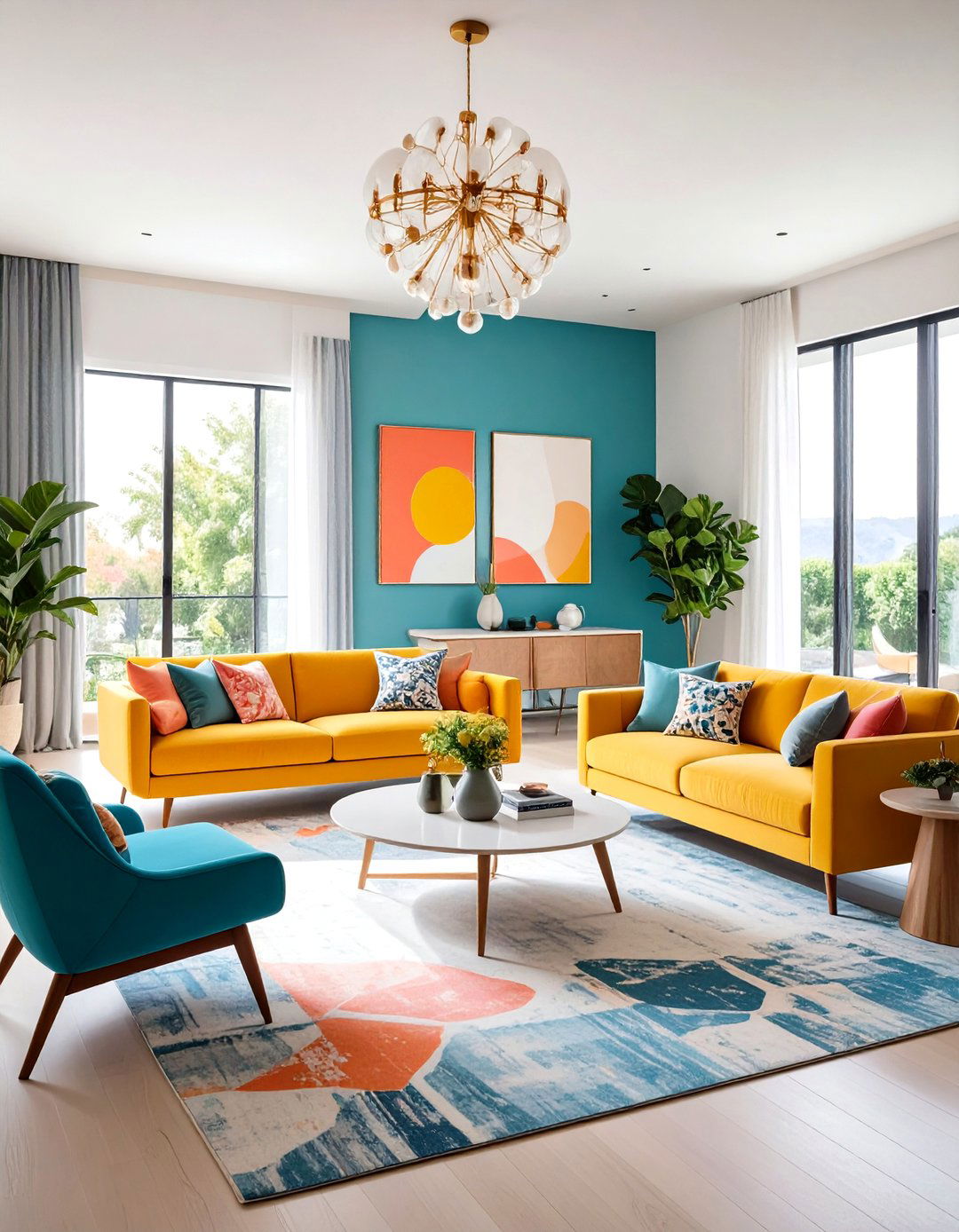
Building a window bench or paired window seats on either side of a centered window provides cozy, balanced nooks for reading or lounging. Upholster the seats in the same fabric, and top them with identical cushions or throws. This arrangement frames the view and maximizes natural light while maintaining a restful, symmetrical aesthetic.
20. Pattern-Drenching in Pairs

Embracing “pattern-drenching” by repeating two complementary prints—such as a floral and a geometric—across upholstered chairs, throw pillows, and window treatments can achieve a bold, symmetrical look. Anchor the design around a core pattern, then mirror its use on opposite sides of the room. This maximalist approach, inspired by Lee Radziwill’s ’60s living room, proves that bold patterns can coexist harmoniously when balanced and mirrored.
Conclusion:
Symmetrical living rooms harness the innate human attraction to balance and order, creating spaces that feel cohesive, welcoming, and visually restful. By matching furniture pieces, pairing décor elements, and centering focal points, you can craft environments that blend functionality with refined style. Whether you prefer formal, mirror-image layouts or more relaxed, subtly paired details, the principles of symmetry adapt to every aesthetic—from traditional elegance to modern minimalism. Implementing just a few of these ideas can transform your living room into a harmonious retreat where every element resonates in balance.


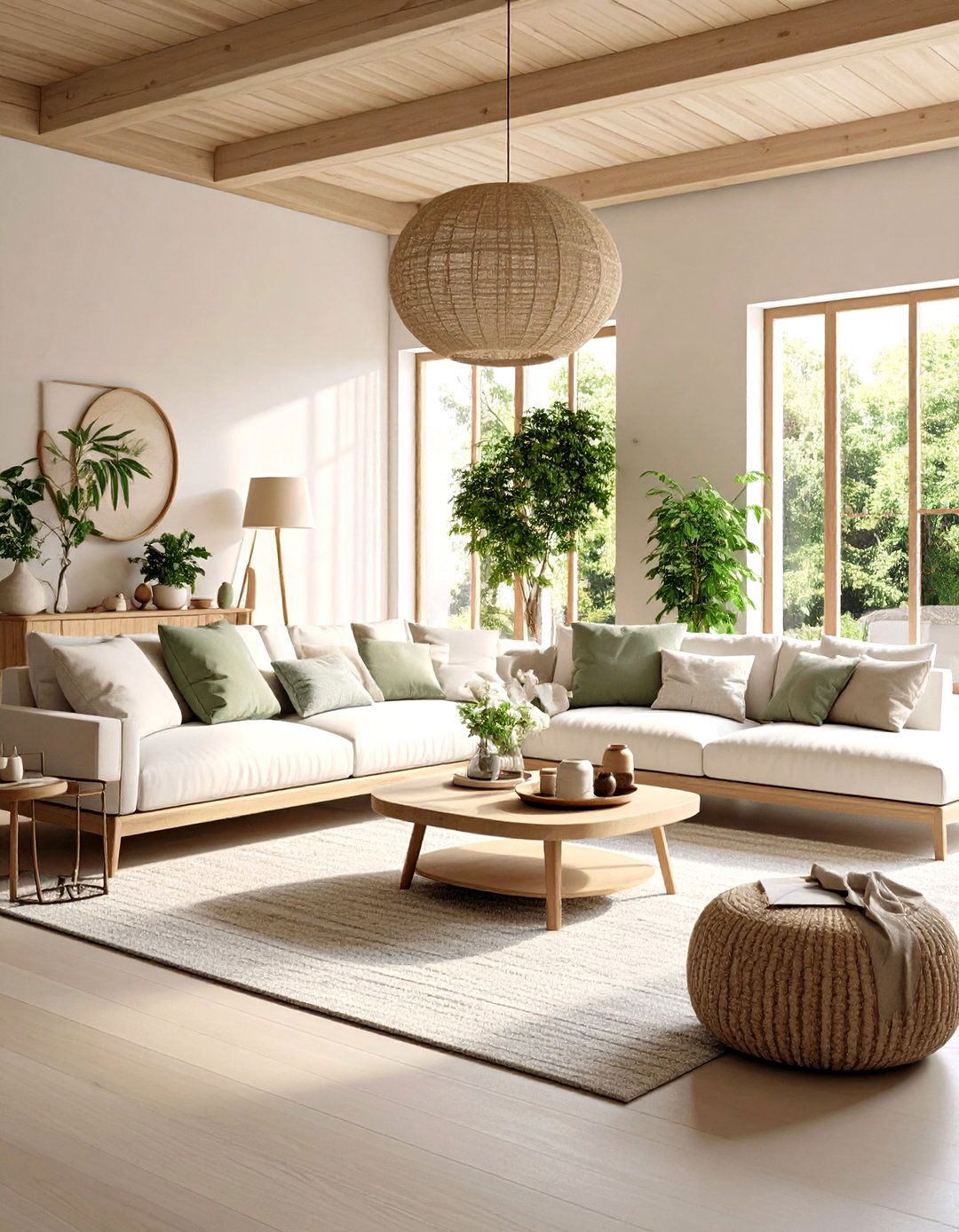
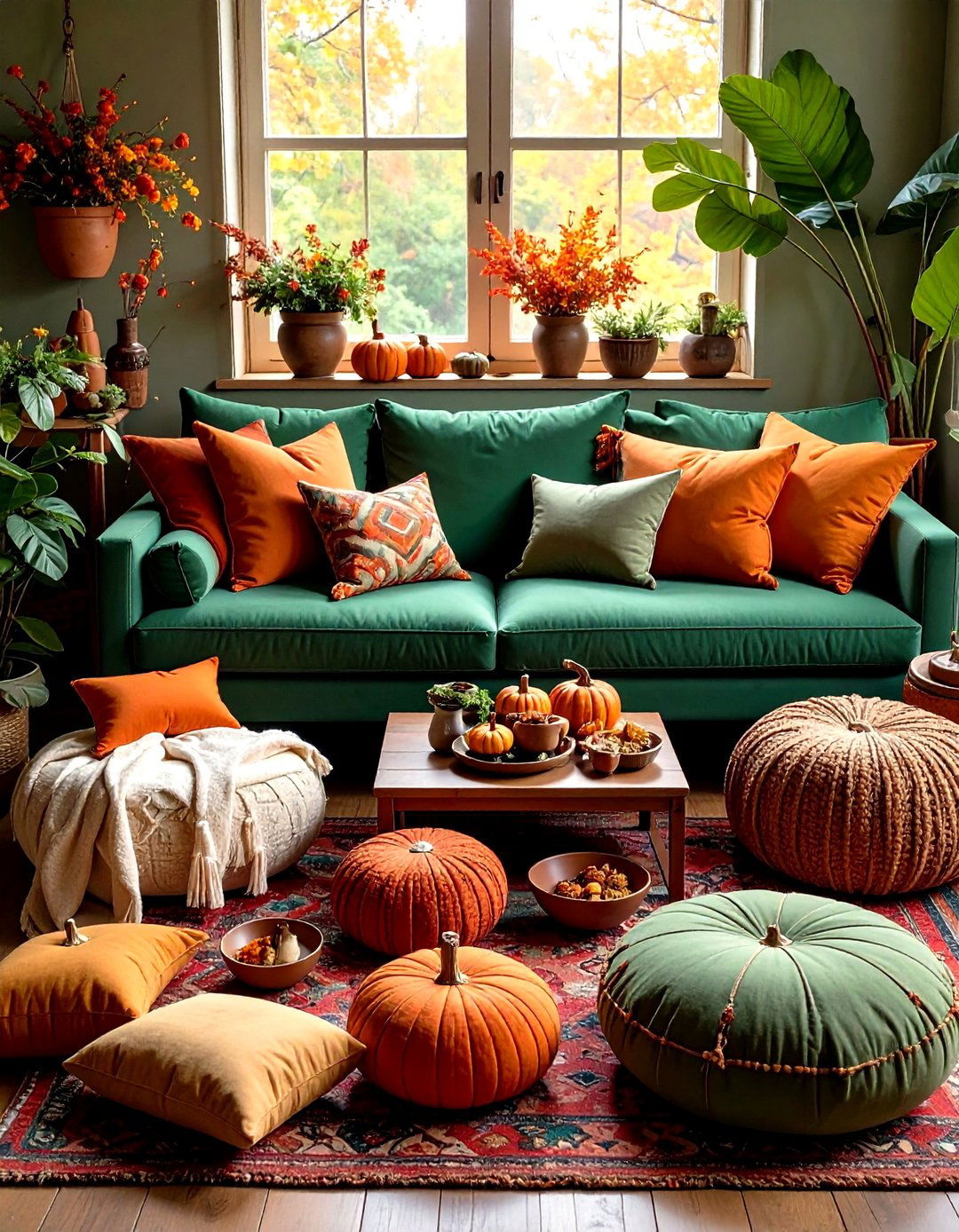
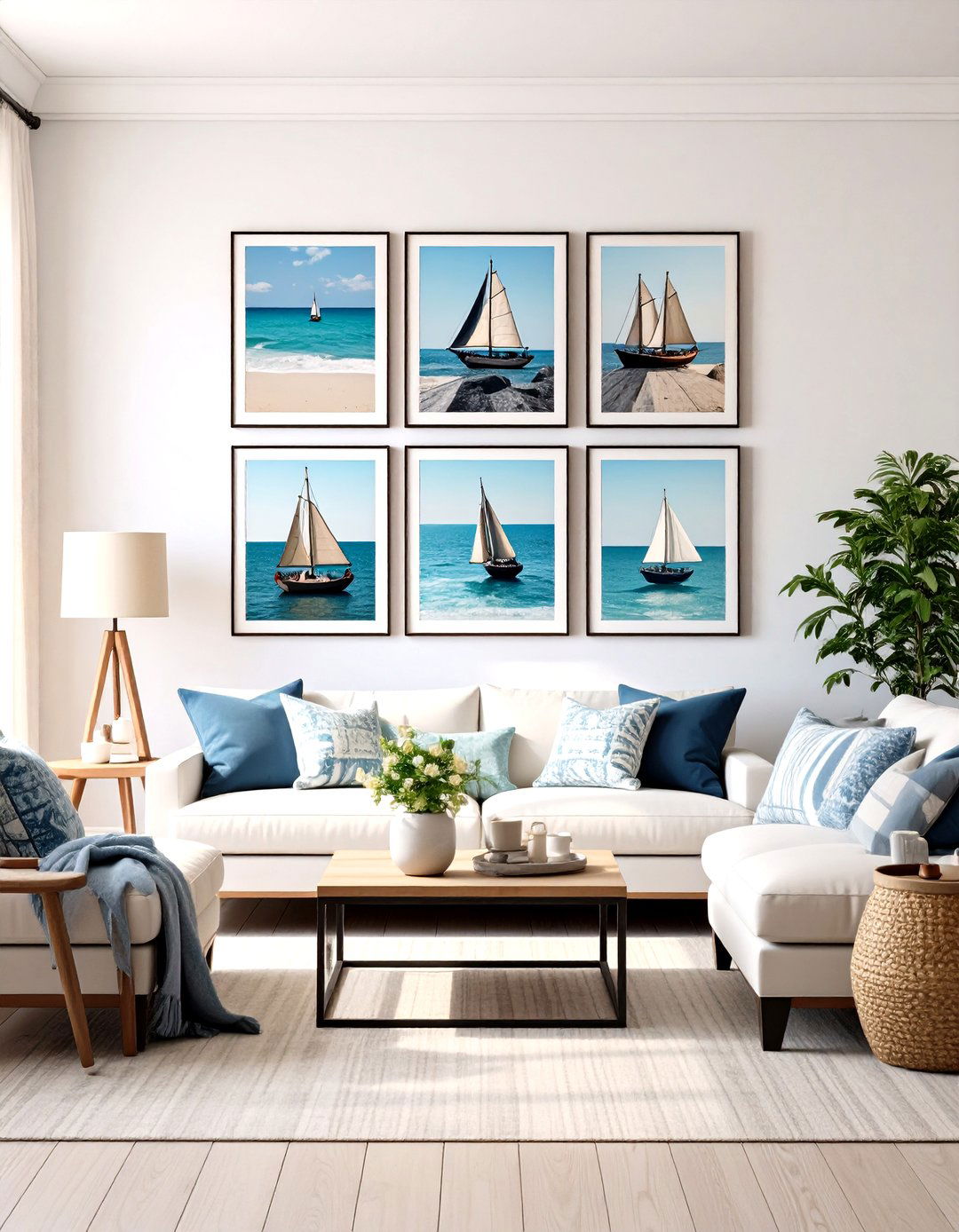




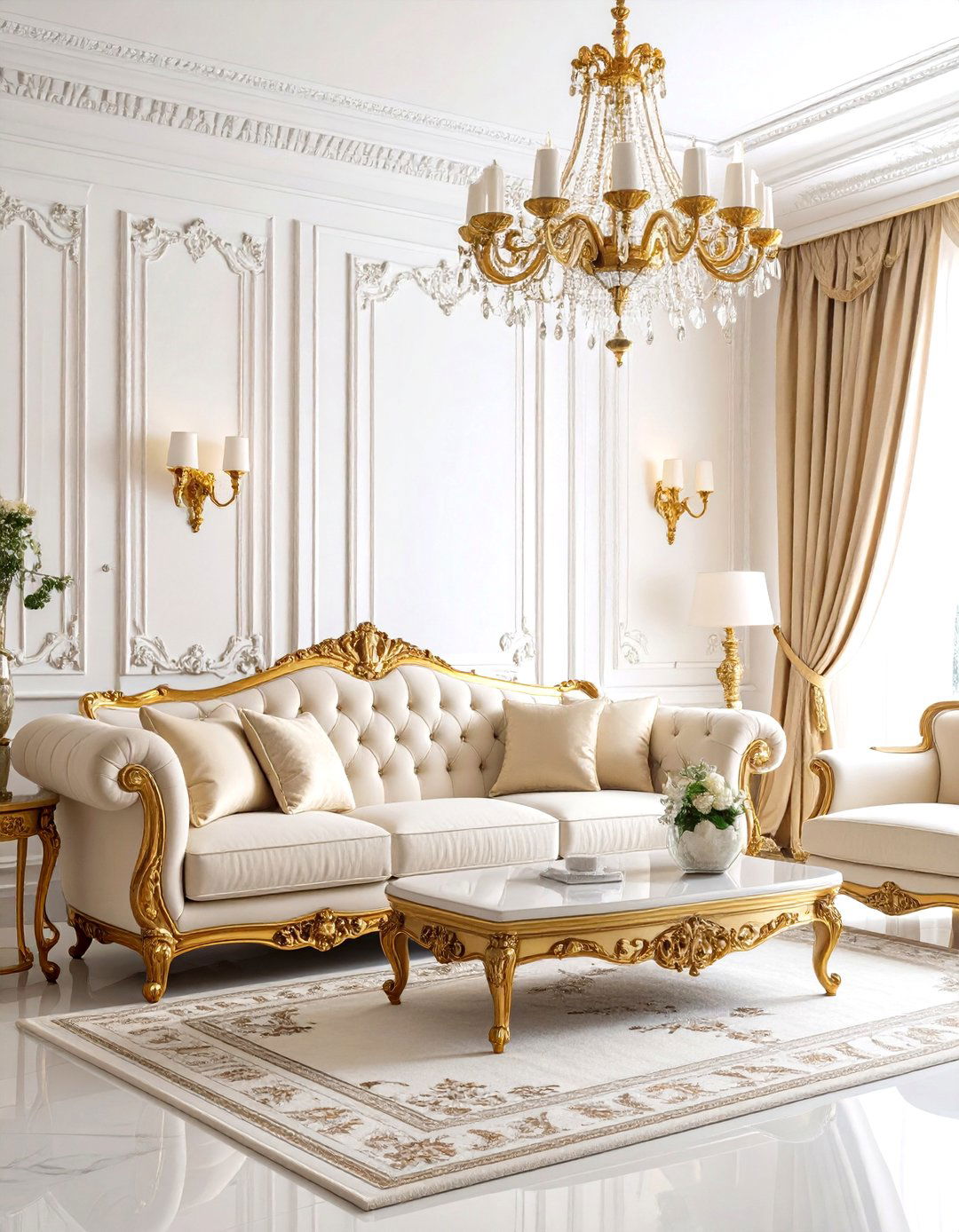

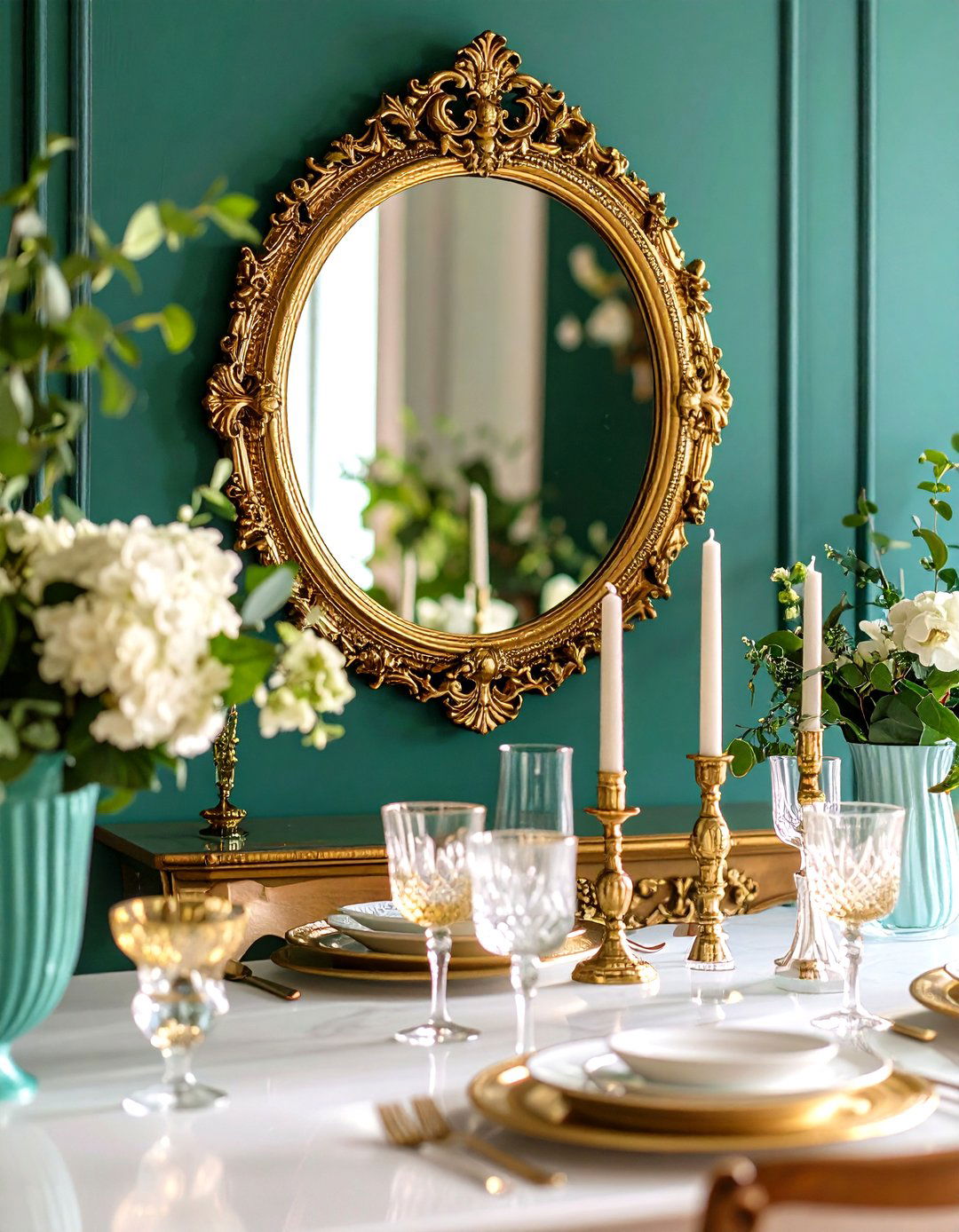
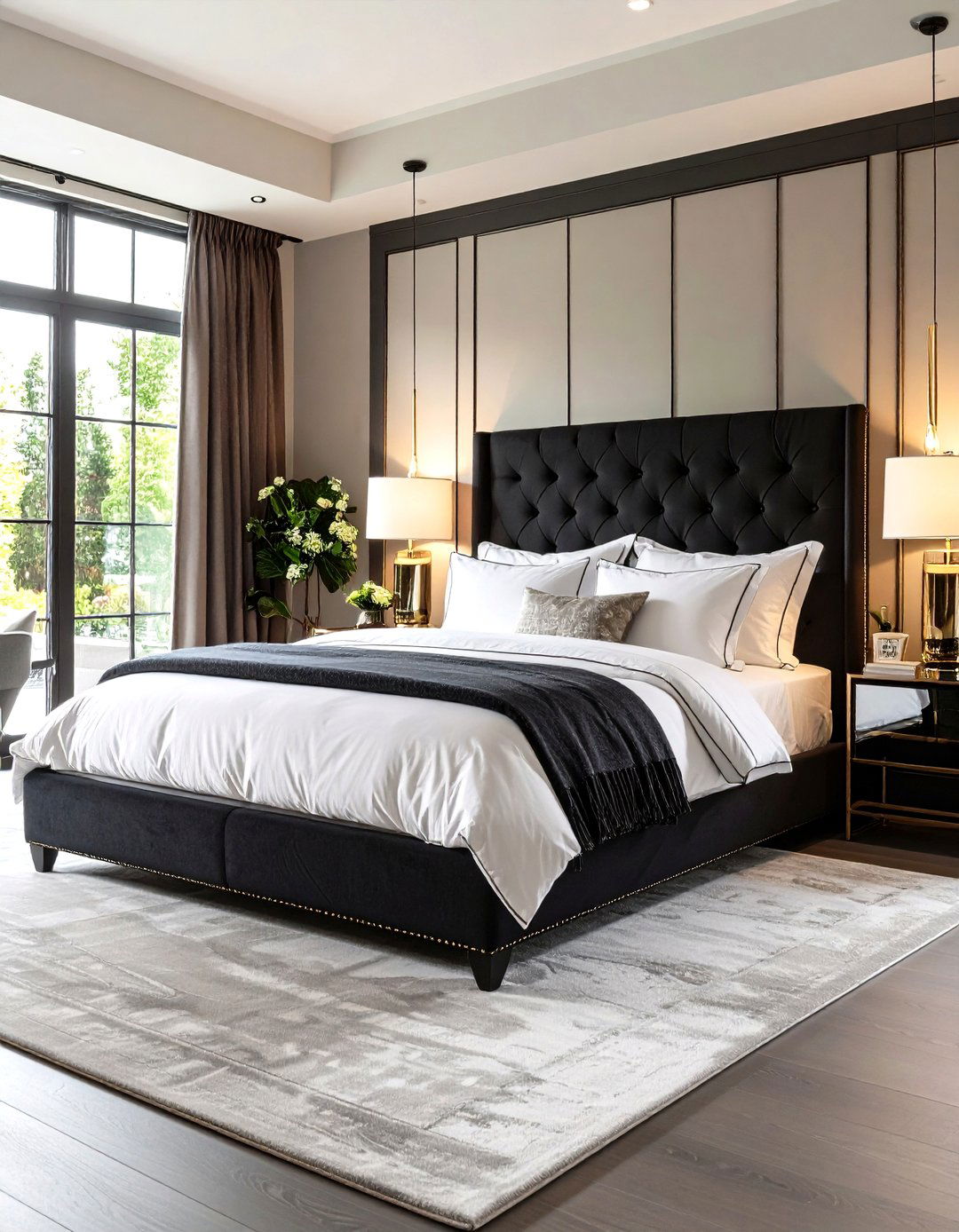

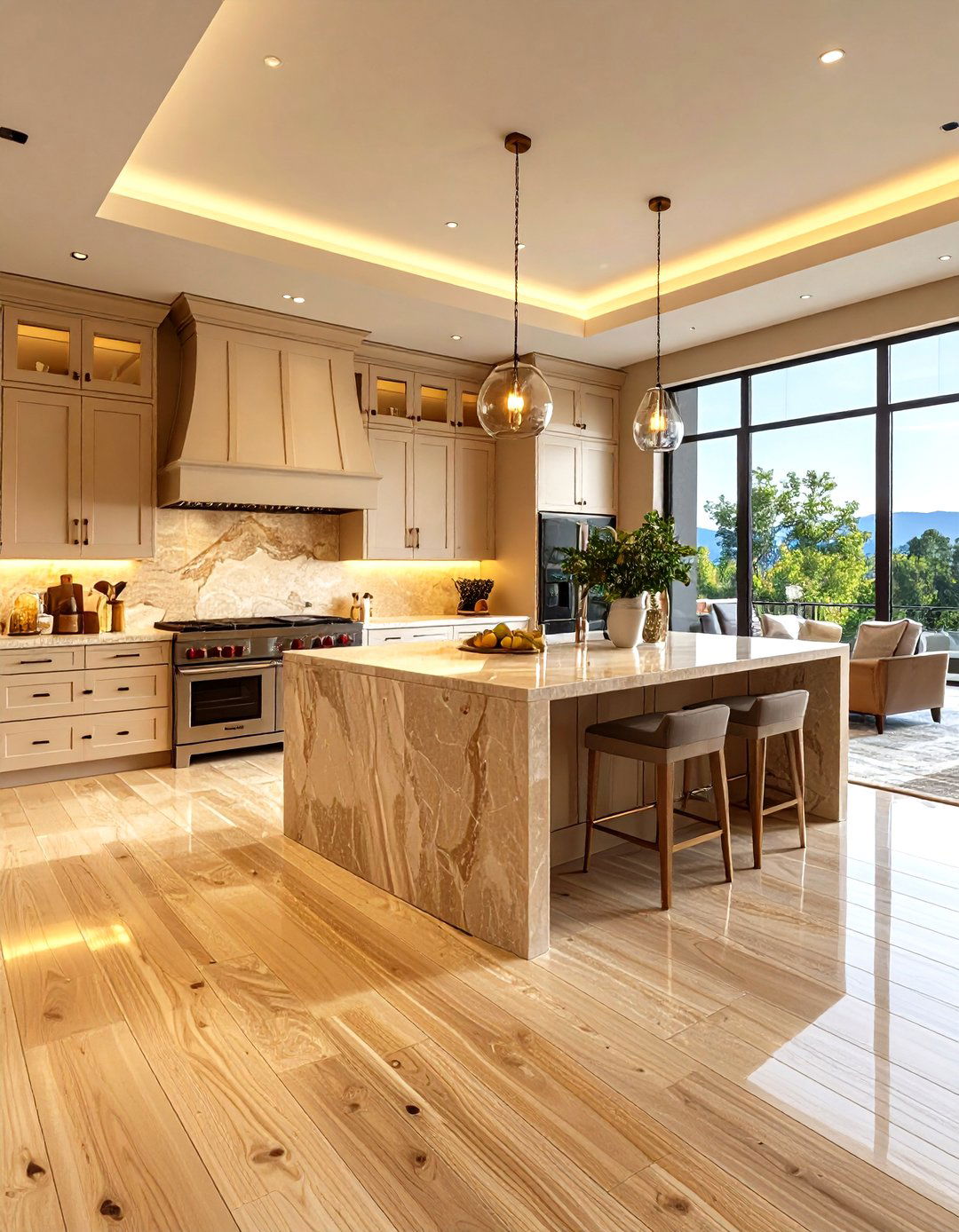
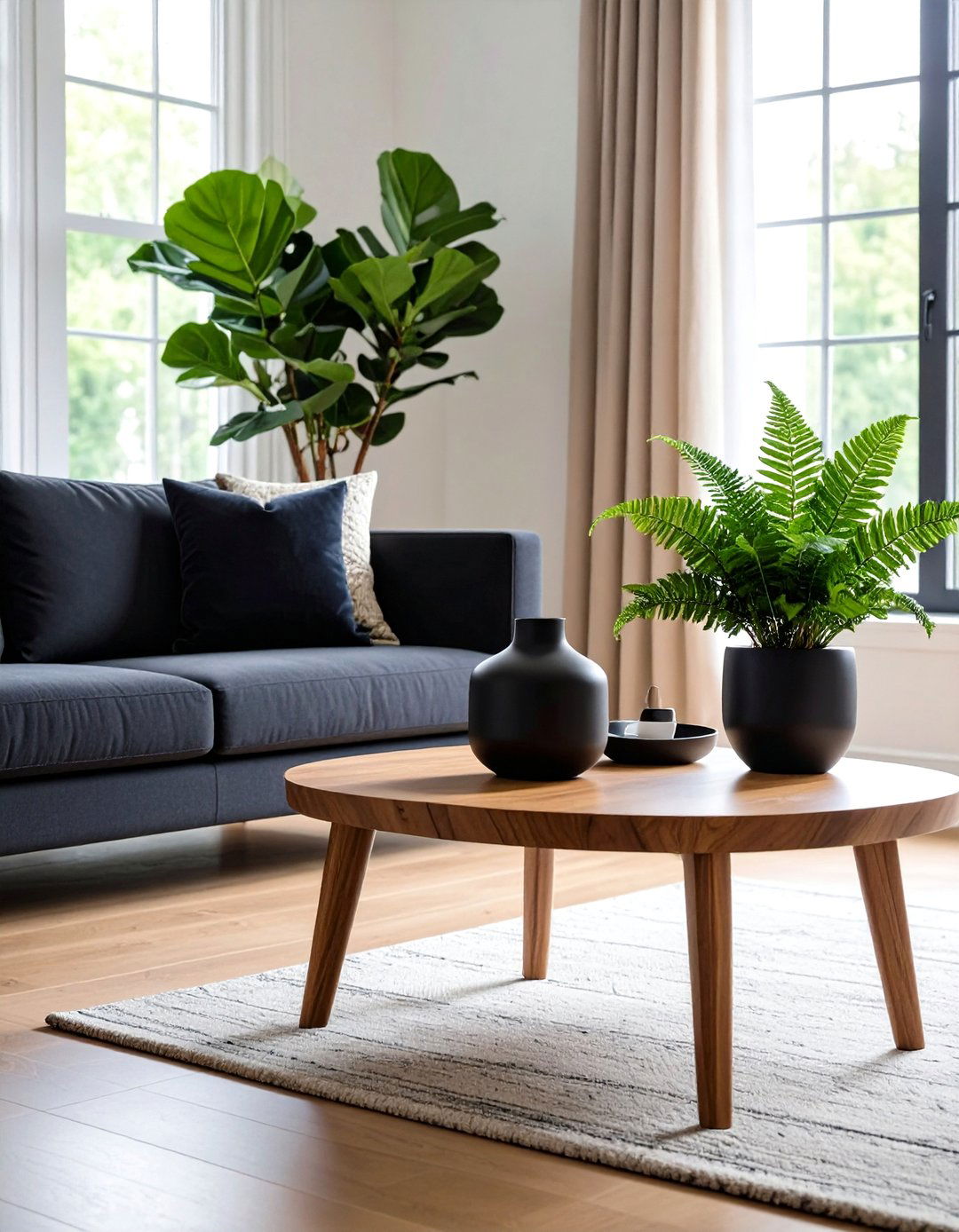
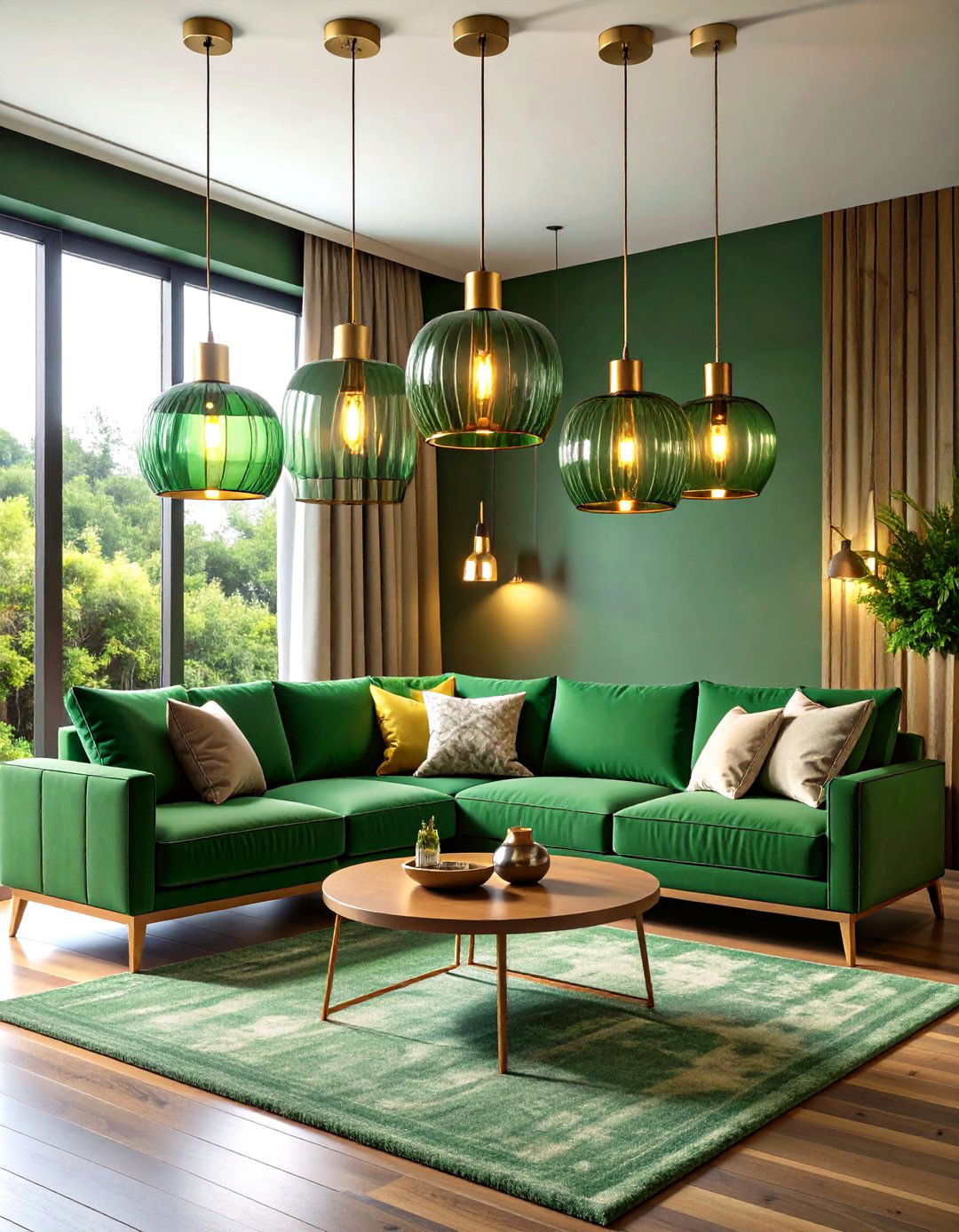
Leave a Reply